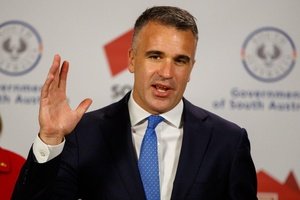A majority of the teachers have been appointed to regional and remote schools where they will bring their diverse and experienced teaching knowledge to the classroom, while also having the chance to explore unique parts of the state.
“The response to the ... recruitment campaign has been overwhelmingly positive, with successful applicants hailing from around the world including the UK, New Zealand, South Africa, Republic of Ireland, and Canada,” Education Minister Dr Tony Buti said.
The minister said the teachers have been appointed to their respective schools following a rigorous selection process, with the international recruits only appointed to their new roles after unsuccessful attempts to fill them with teachers already in Australia.
“They were carefully chosen to ensure their skills and expertise match the needs of the school and its students,” Buti said.
“They bring their wealth of world-class international experience to WA classrooms to inspire our bright young minds.”
Sixty of the recently arrived teachers kicked off a week-long induction today, ahead of the new school year, where they will have the chance to connect with other educators.
The practical induction will include specialised learning modules on teaching in WA, cultural responsiveness, and classroom management.
“It is vital that we attract the highest quality teachers to the public education system in Western Australia and ensure we have the right people for the job,” Buti explained.
“The teachers are looking forward to settling in, immersing themselves in their local communities, and being welcomed at their schools.
“Western Australia is an incredible place to live and work, and I have no doubt the teachers will enjoy exploring our vast state and all that it has to offer.
The recruitment campaign, the State Government said, continues its ongoing commitment to regional education following the success of its Regional Attraction and Retention Incentive package and a significant number of major school redevelopment projects.
It comes amid a national staff shortage fuelled by heavy workloads, insufficient pay and negative perceptions of the profession.
The Federal Government predicts the total number of new teachers entering the profession between now and 2025 will be 4100 fewer than is needed, partly due to student numbers, which are growing by around 10 per cent each year, and falling teacher numbers.
Between 2017 and 2020, education course completion rates fell by 17 per cent each year.
Last year, federal, state and territory governments agreed on an ‘action plan’ to address the teacher shortage, which included a commitment to fund more university places and scholarships to study teaching, alongside a review of teaching courses.
It also promised funding for initiatives to reduce teacher workload and better classroom resources and the national Be That Teacher campaign, launched in October, to elevate the status of teachers and “to recognise [teachers’] immense value”.














